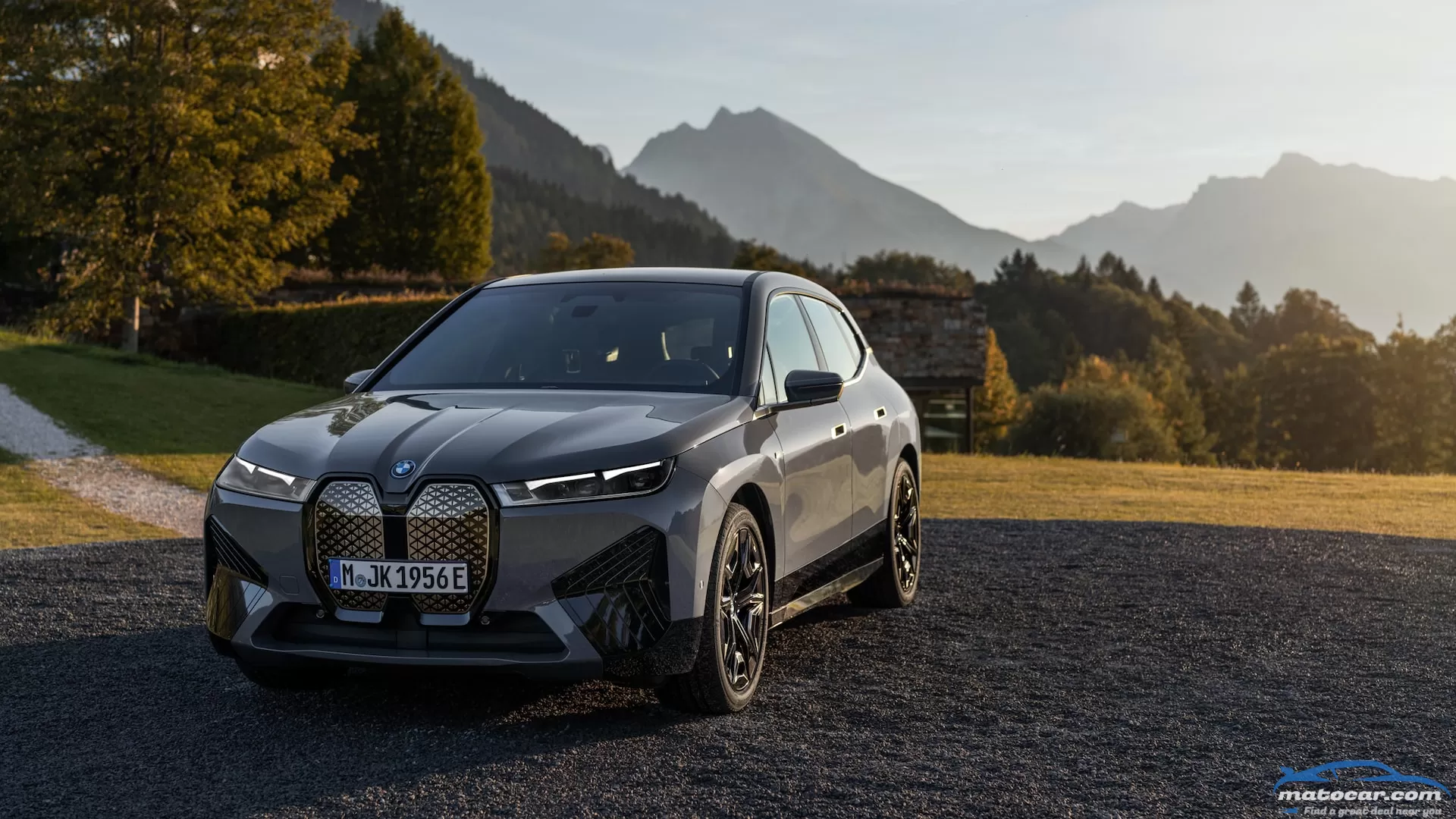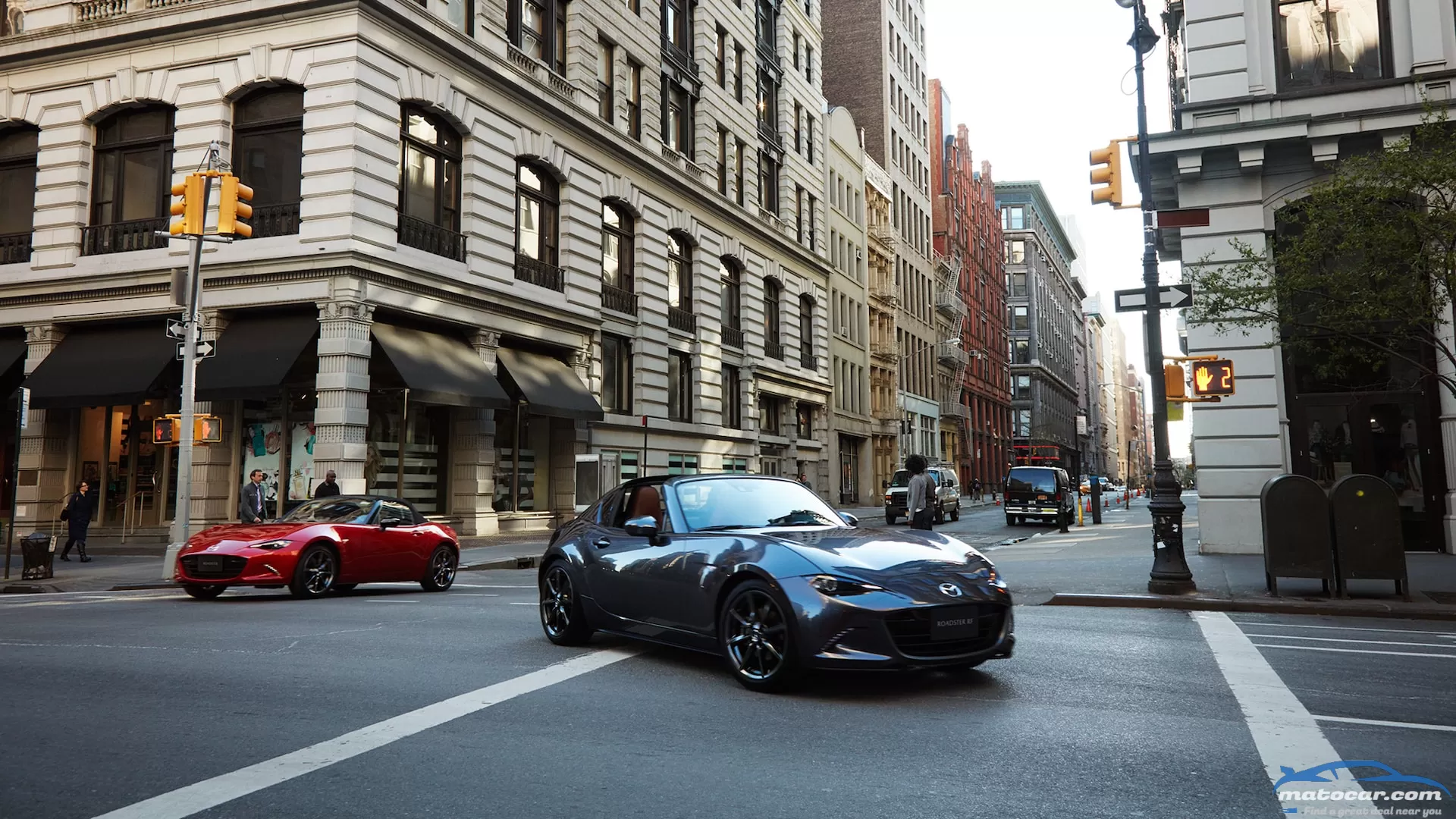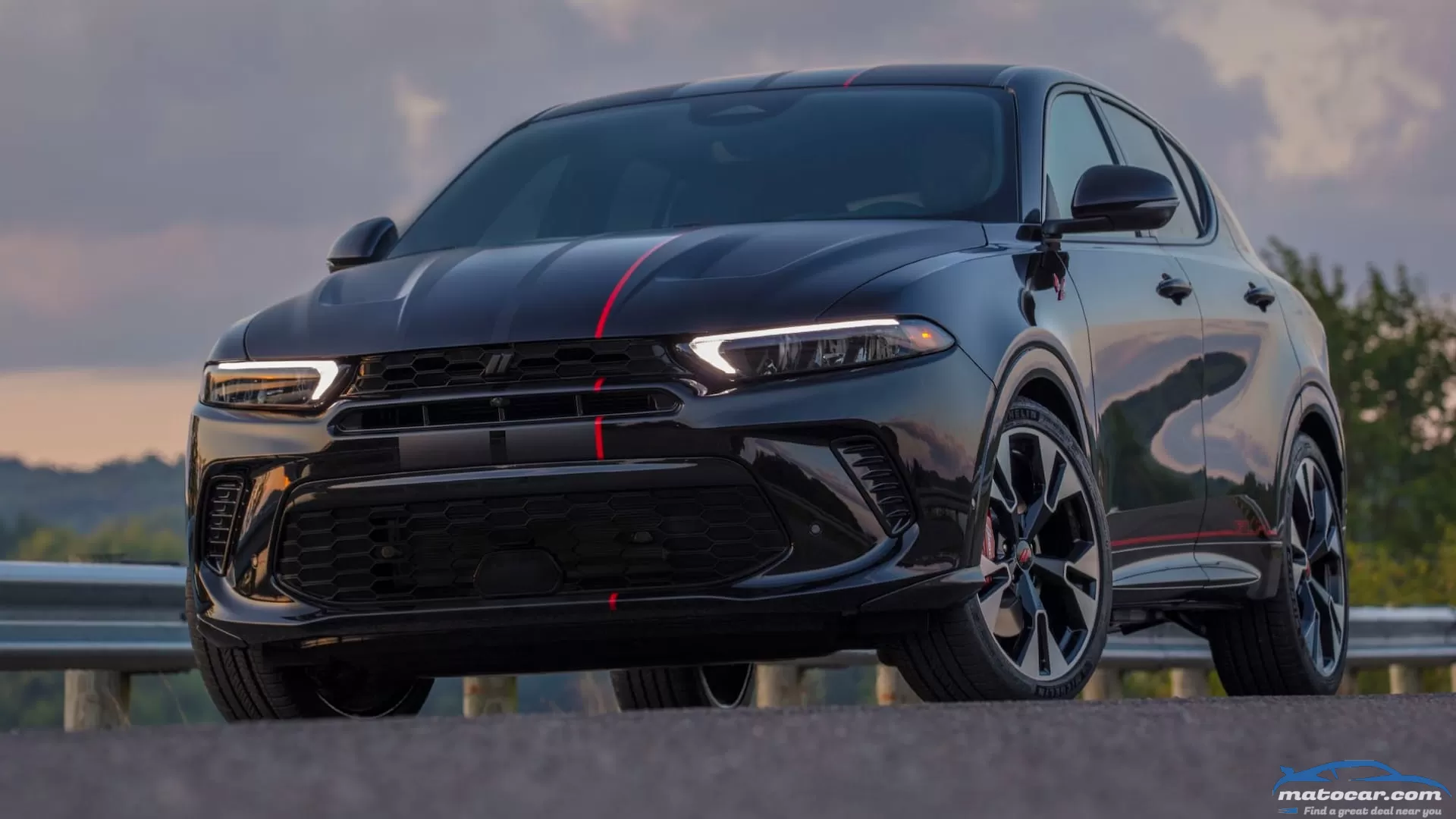Koenigsegg (Yes, the Swedish Hypercar Company) Is Making Parts for Teslas
-is-making-parts-for-teslas.webp)
Looking to deck out your Tesla with carbon-fiber dress-up bits? A new lineup of carbon parts from Unplugged Performance bring more than an extra dash of splash—they're manufactured by none other than Koenigsegg. Yes, that Koenigsegg, the hypercar manufacturer behind crazed top-speed runs and exotic (internal-combustion) engine technologies.
This collaboration, dubbed UP x KAM, in reference to Koenigsegg Advanced Manufacturing, kicks off with carbon-fiber spoilers for the Tesla Model 3, Model Y, Model S, and Model X, as well as wider front fenders and a "high-downforce" spoiler for the Model 3 specifically. More parts are promised later this year.
While the parts themselves cost significantly less than, say, one entire Koenigsegg hypercar, these aren't Pep Boys bits. The regular spoilers for the Model 3 and Y run $1,745 apiece and are claimed to aid each vehicle's aero efficiency. The "long-tail" spoilers for the Model S sedan and X SUV cost a cool $2,495. And those wider Ascension R front fenders for the Model 3? Those are listed at an eye-popping $8,845; to be fair, the lightweight wings lend the Model 3 a spicy vibe while their 0.8-inch extra width helps accommodate up to 315-section tires, compared to the biggest a regular 3 can comfortably swallow, 275 to 295s. Unplugged Performance also claims the fenders, when used in collaboration with other Ascension-R front-end parts, help with downforce.
Every component comes with a nifty UP x KAM sticker denoting the Koenigsegg, er, koennection, and each piece is handmade. Quantities of these first-run products are limited, so if you want some for your Tesla, you better hurry. Unplugged Performance also has its own assortment of exterior upgrades for Teslas, in case you miss out.
You may also like
BMW calls the iX its technology flagship, but the 2023 BMW iX M60 aims to be the company's high-performance technology flagship. Built as a true M vehicle, the iX M60 features dual motors for a combined 610 horsepower while still achieving nearly 300 miles of range. The sportier EV crossover won't be all hardcore performance thanks to its air suspension system, innovative interior features, and connectivity that you've come to expect from the Bavarian luxury brand.High-Tech ChassisThe iX M60 leverages the latent performance potential of the relatively lightweight iX xDrive50 model, utilizing an aluminum spaceframe chassis, carbon fiber unibody, and carbon fiber reinforced panels for the roof, side, and rear sections. All that helps it com in at 5,769 pounds, with a large portion residing down low in the battery pack. Those exterior panels can also come in seven different colors, with Alpine White as standard and range from Dark Graphite Metallic, Phyronic Blue Metallic, Blue Ridge Mountain Metallic, Storm Bay Metallic, Oxide Grey Metallic, and Aventurin Red Metallic.A double-wishbone setup is found up front, while the rear is a five-link. All four corners are suspended by an air suspension system with electronically controlled dampers, which take roll, acceleration, deceleration, vehicle speed, and even steering input to make sure the body stays planted. That damper rate is further mapped differently depending on the "My Modes" setting, which is changed by a button on the center console. Steering is assisted by BMW's Servotronic with a variable ratio steering rate. This all is designed to deliver optimum handling and feel while also keeping the M60's height correct at any speed and any load. You can also adjust the height of the body manually if you think you need extra ground clearance or not.The wheels and tires the iX M60 comes with will, of course, also play a role in upping its performance over an iX xDrive50. The standard wheel is a 21-inch design wrapped in 255/50R21 sized tires on all four corners. The optional wheel is a half-inch-wider, 22-inch-diameter aluminum wheel with a unique aerodynamic design and Titanium Bronze color with a 275/40R22 tires. Behind either wheel are blue-painted, Brembo-made brake calipers with the "M" logo, letting bystanders know that you have the highest performance braking yet fitted to a stock BMW EV. It's a fixed four-piston caliper for each front wheel and a fixed two-piston caliper on each rear.High-Tech InteriorInside, every iX M60 will come standard with BMW's Live Cockpit Professional and Natural Interaction, which allows you to activate certain functions via your voice or even by gestures, much like your smartphone. Giving you and your occupants theater quality sound is a standard Bowers and Wilkins Diamond Surround Sound system. The headliner comes in Anthracite as standard but you do get five different interior colors to choose from. The Oyster, Mocha, and Black colored interiors come in perforated SensaTec synthetic materials but if you want the feel of real hide, you can get perforated leather coverings in Amido or Castenea Chestnut colors.Both the front passenger and the driver are treated to Active Seat Ventilation, but the hot part is the Radiant Heating Package. This system warms not only the seats, steering wheel, and armrests but also the door panels and dashboard, as found in some Mercedes products these days. You'll still get more traditional hot air to defrost the windows courtesy of an efficient heat pump system. A thermally insulated windshield helps keep that warm air in. Occupants are also surrounded by ambient lighting with LED strips located between the door cars and windows and in the Panoramic Sky Lounge LED roof.Fifth-Generation Rear MotorNow, we get to the fun bit: the e-motors that drive the BMW iX M60. BMW employs a three-phase AC synchronous motor out back, which according to BMW allows for more energy density, faster switching frequency, and better heat management—all of which translate to higher RPM, more horsepower, and more torque. More power and torque, indeed—the standard combined output of both the front and rear motor is 532 hp and 749 lb-ft of torque. Individually, the front motor provides 255 hp while the rear motor provides 483 hp in normal operation. In Sport Boost mode, that jumps to 610 hp while Launch Mode slams you in the back of your seat with 811 lb-ft of torque.Battery Type and CapacityThe iX M60 employs a lithium-ion battery pack with a 106.3-kWh nominal power capacity. It's capable of Level 2 AC charging at up to an 11-kW charging rate for a 0-100 percent charge in just over 10 hours. However, it is also DC fast charge capable at up to 250 kW, going from 10-80 percent full in about 35 minutes. In all, you'll get 280 miles of range out of the iX M60 on a full charge, according to BMW's preliminary EPA rating.If you're looking for the current epitome of EV performance with a focus on German build quality, you're going to want to take a look at the 2023 iX M60. At the very least, you're getting a taste of BMW's bright and powerful future. The 2023 BMW iX M60 is set to launch in June of 2022 with a base price of $106,095.
With the retirement of the third-generation 6 sedan, just two car models remain in Mazda's 2022 lineup, the MX-5 Miata roadster and 3 compact (and really, it's more like three cars since the 3 comes in both sedan and hatchback varieties). Model year updates for each include new exterior colors, interior materials, drivetrain technology, and even a new trim for the 3.The 6 is gone, but that might be only for now. There's a promise of something wearing the 6 badge on the horizon. Keep reading for more about that future sedan as well as what's new and different with every 2022 Mazda car.
Measured against a Scat Pack, Hellcat, or Demon muscle car, the 2023 Dodge Hornet's 265 horsepower won't register as anything to get excited about. But compare this new compact crossover with its exceedingly sedate competition, and it's clear that Dodge is doing things differently as it launches a long-overdue entry in the most popular segment in the U.S.The class favorites—the Toyota RAV4, Honda CR-V, and Nissan Rogue—all subscribe to a common formula: standard front-wheel-drive and just enough power to keep from getting run over while merging onto a freeway. When it goes on sale in December 2022, Dodge's base model, the Hornet GT, will buck convention with standard all-wheel-drive and enough grunt for a claimed 6.5-second 0-60 time. For speed junkies, there's also a catalog of performance parts that won't void the warranty and a quicker plug-in-hybrid model.A Base Model That's Hardly BasicWe should note that Dodge is saying the Hornet GT's Hurricane4 turbocharged 2.0-liter I-4 which pairs with a nine-speed automatic, will make 295 lb-ft of torque and at least 265 horsepower. Don't be surprised if a few more horses show up for production. That level of performance and all-wheel-drive traction won't come free, though. While the RAV4 and CR-V start around $28,000, the cheapest Hornet will cost around $31,500. Dodge justifies that number by also loading its offering with premium standard equipment, including a 12.3-inch digital instrument cluster, a 10.3-inch infotainment touchscreen, blind-spot monitoring, lane-keeping assistance, rear parking sensors, and dual-zone climate control.We'll have to drive a Hornet GT before declaring it a value compared to similarly powerful competitors, but the base price comes in about $4,000 below that of the smaller, racier Hyundai Kona N and more than $8,000 under the price of the Mazda CX-50 with the optional 256-hp turbo engine.Plug In to Power UpFor an extra $10,000, Hornet buyers can step up to the R/T model with a plug-in hybrid powertrain promising at least 285 horsepower and 383 lb-ft of torque. The R/T, which goes on sale in the spring of 2023, drives its front wheels through a six-speed automatic transmission using a turbocharged 1.3-liter I-4 with a 44-horsepower starter/generator. A 121-horsepower electric motor turns the rear wheels. The 15.5-kilowatt-hour battery pack allows for more than 30 miles of pure electric driving, while Dodge's PowerShot feature attempts to lure gearheads with gas in their veins into opening their minds to electrification.With the tap of a steering-wheel paddle, PowerShot unleashes an additional 25 horsepower for 15 seconds at a time, trimming the R/T's 0-60 time by a full second, down to a claimed 5.1-second sprint. Dodge is also crowing that the R/T is capable of 0.90 g of lateral grip and is driving home the plug-in's performance positioning with 18-inch wheels, Brembo four-piston front brake calipers, and dual exhaust. A Track Pack, available on both the GT and the R/T, adds 20-inch wheels, two-mode electronically adjustable dampers, and Alcantara seats.The Compact Crossover That Goes Like HellWhile a Hellcat V-8 isn't in the cards, Dodge's fascination with the underworld lives on in the Dodge Hornet GT GLH concept. Those three additional letters stand for "Goes Like Hell" and invoke the 1980s Dodge Omni GLH—a hot hatch modified by none other than Carroll Shelby himself for Dodge. The modern incarnation of the GLH sports a lowering kit that drops the Hornet one inch, an unspecified power increase, a sport dual exhaust, 20-inch wheels, a unique rear valence, and GLH graphics.These parts will be offered as Direct Connection aftermarket parts, and—when installed by an authorized dealer—won't void the car's warranty. It also seems likely that Dodge will eventually offer a similar package direct from the factory.The Italian JobIf photos of this new small SUV trigger déjà vu or the specs sound familiar, that's because the Hornet is a 2023 Alfa Romeo Tonale wearing a Dodge mask. These compact crossovers offer the same powertrains, use the same bodies, and come out of the same Italian factory. More of this badge engineering seems inevitable if Stellantis is going to keep Dodge, Alfa, and the dozen other automotive brands under its care well fed with new products.At the price point and performance being advertised, it looks like Dodge is on the winning side of this particular parts-sharing arrangement, but we're left wondering: Is the Hornet a discount luxury crossover, or is the Alfa Romeo Tonale a Dodge in a tailored suit? We'll need more time with both vehicles to answer that.If there's one thing to kvetch about, it's that the blunt front-end styling of the Charger and Durango look out of place transplanted on the softer lines of the Hornet compact crossover. Oh, and we feel cheated that this new SUV looks nothing like the excellent 2006 Dodge Hornet concept.Can the Hornet Make Compact Crossovers Cool?Compact crossovers aren't wildly popular because they elevate your street cred. These small utility vehicles end up in millions of American garages every year because they're relatively affordable, efficient, and readily swallow a couple of car seats and a stroller. For Dodge, that reality is both an opportunity and an obstacle. There are relatively few options for buyers who need an affordable, practical vehicle and want something that's fun to drive. Maybe there's a reason that's the case. Is there a market for a more expensive, less efficient utility vehicle that's designed around performance and aimed at the masses? Only time will tell.




0 Comments